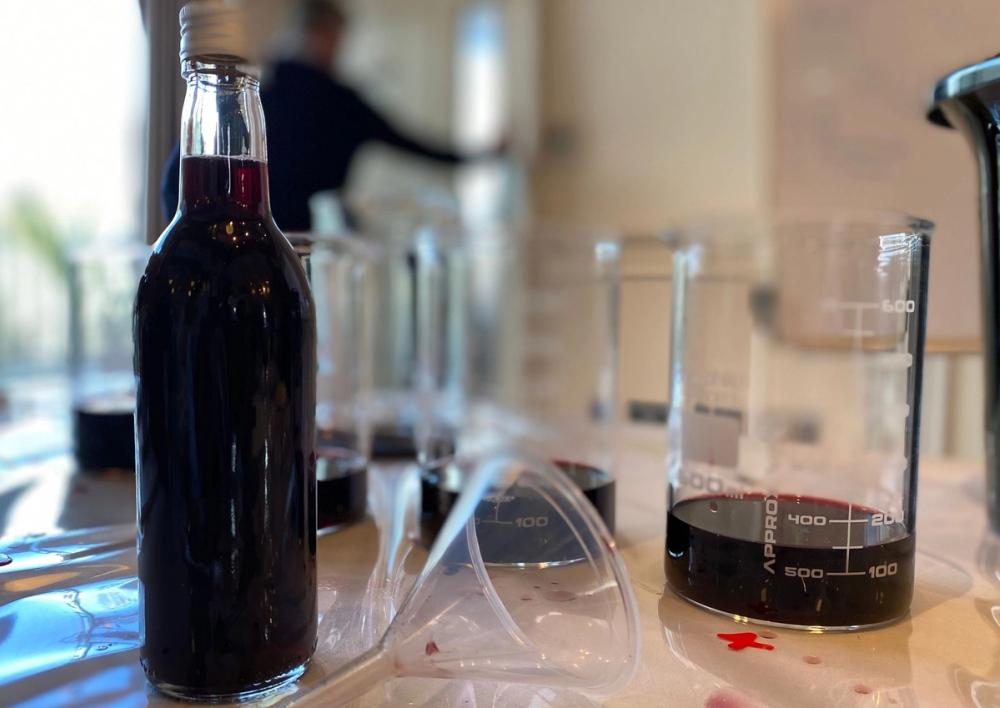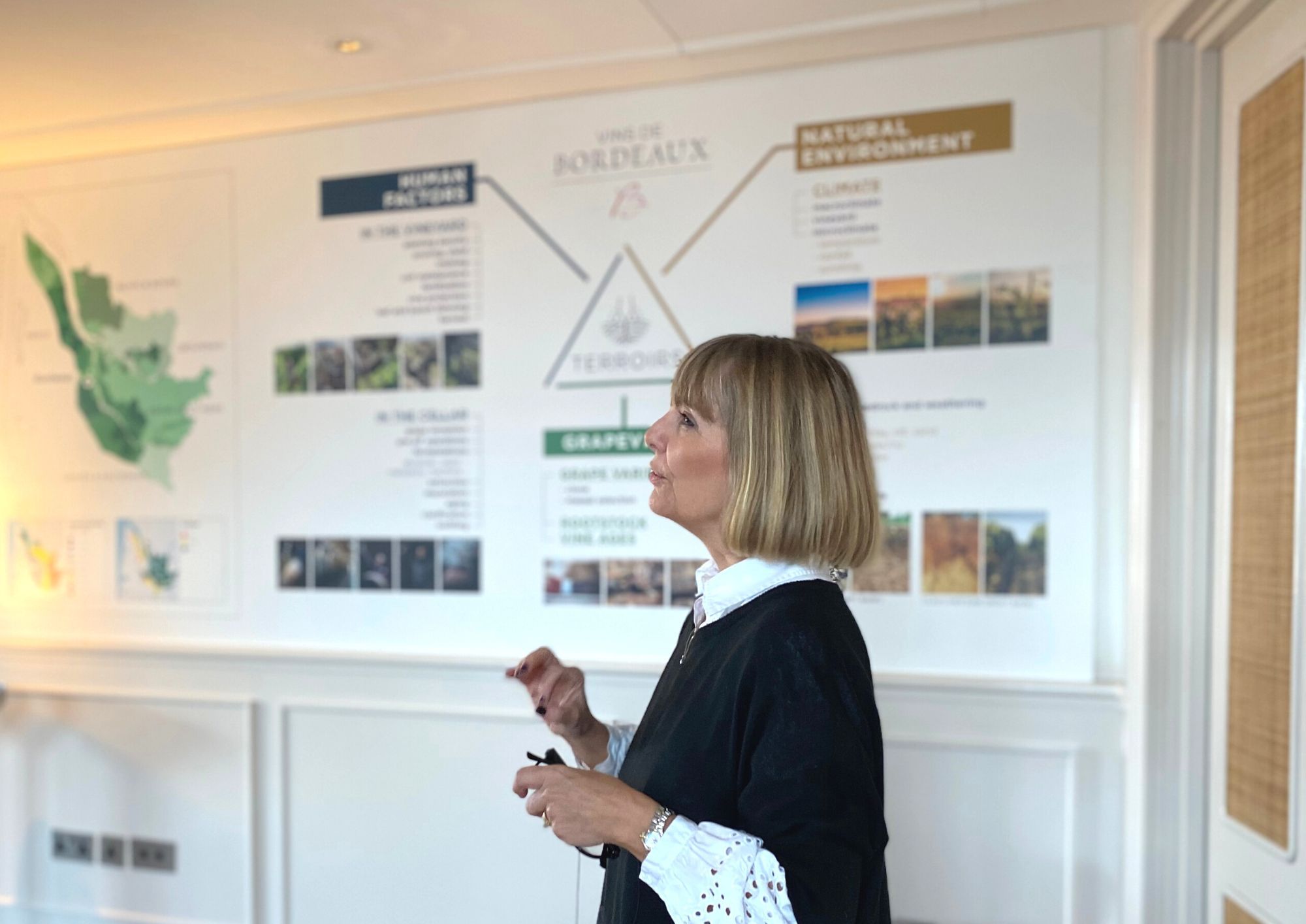“Bordeaux used to be a marginal grape-growing region – hence blending was key to achieving consistency in style,” writes Turner after the Bordeaux Blend session.

Place Your Bets – Guessing the blends of some Hot 50 winners
I don’t think it’s particularly controversial to say that Bordeaux has given the world some of the most famous blending combinations in wine. The famous Cabernet Sauvignon and Merlot red blends (with a handful of handy partners), and Sauvignon Blanc and Sémillon white blends have not only produced some of the most fabulous wines to ever grace the green earth, they have also been copied by other wine regions far and wide. But why is it that these blends came to be in the first place? And just what is involved in coming up with such iconic blends each year?
Why do the Bordelais Blend?
The Bordeaux Blend session at London’s Mortimer House started with a whirlwind tour of the grapes and terroirs of Bordeaux, presented by the fabulous Laura Clay. She is convinced that Bordeaux is currently producing better wines than it ever has, with a mix of better vineyard management, increased knowhow in the cellars, and the changing climate all being contributing factors. The ability and art of blending across all the variables Bordeaux has to offer grape growers, Clay continues, has helped to ensure high levels of quality and beloved châteaux styles.
The Bordeaux region covers just over 110,000 hectares, and contains 65 AOCs, giving a range of soils and micro-climates that undoubtedly suit some grapes more than others. Cabernet Sauvignon is famously said to “not like wet feet” and so prefers the gravelly pockets of the Médoc or Graves. Merlot prefers the cooling damp clay-limestone that is abundant throughout the region. Malbec is beginning to perform well (once again) on the slopes of the Côtes de Bordeaux.
Historically it was always very good sense to plant more than one variety. It might be difficult to remember in the face of rapid climate change, that Bordeaux used to be known as a marginal grape-growing region. In cool vintages Cabernet Sauvignon would struggle to ripen, in warmer ones Merlot could become far too heavy. So the ability to blend different parcels and varieties meant that winemakers could attain a certain level of consistent quality year on year. Even with more consistent ripening in recent vintages, the threat to yields of spring frosts on the early ripening varieties means that ‘spreading your bets’ still makes sense.
1 + 1 = 3

Blending on a root day: Matthieu Huguet, consultant oenologist
Once the theory of why the Bordealais blend was firmly ingrained in us all, the Bordeaux Blend session moved on, quite literally, to an adjoining room filled with beakers, pipettes and our special guest wine making consultant. Matthieu Huguet is the founder of Sadon Huguet, an oenological consultancy specialising in organic, biodynamic, and minimal intervention wines.
“The challenge when I begin to work with a new client is to understand their house style,” begins Huguet. “Whether their premier vin or other wines in their portfolio, I begin with a vertical tasting and get the style that both the client and their customers clearly enjoy. My blending decisions then follow on from there.”
Huguet revelaed a very simple blending mantra as he presented the individual beakers to us.
“I work to the premise that 1+1=3!” jokes the oenologist. “The blend needs to taste better than any of the individual components.”
In turn we sniffed, swirled, tasted and examined beakers of Cabernet Sauvignon, Merlot, Carmenère, and Cabernet Franc noting in detail what each one offered and being encouraged to begin building the picture of a blend in our heads. “Just so you know,” chimed in Huguet, “it’s a root day today, the best day to blend. If your wines and blends taste good on a root day then it’ll taste good on any day!”
Structure is king
Blending is usually performed at an early stage in the life of the wine, sometimes even before élévage in barrels, vats, or eggs has taken place.
“When assessing which wines to blend it is important to take the structure into account much more than the aromas,” revealed Huguet. “The aromas will probably change in the next six to 12 months, but the tannic and acidic structure has much more impact on the present and future quality of any wine.”
Tasting the wines in isolation like this was something that you rarely get a chance to do. You can really feel the warmth and smokiness of a ripe, high-ish alcohol Merlot. You can close your eyes and sniff wistfully on the rose petal and fresh fruit of Cabernet Franc. You can feel the depth and expressiveness of Cabernet Sauvignon building into a long, luxurious finish. Even the Carmenère, although not a grape variety I have much experience with, showed its worth as a “seasoning ingredient” as a tannic and fruit-driven auxiliary grape.
Coming up with the final blend

Trying it for yourself with your own cuvée to take home
As the session concluded, it was time to concoct our very our cuvée. Despite taking a painfully long time to work out how to use the pipette (school for the gifted!), I ended up getting the hang of it and tried my way through two or three different iterations. And blow me down if I didn’t think I had cracked it with the first one! I’m not sure Monsieur Huguet will be taking me on as an apprentice any time soon, but my blend of 50% Merlot, 20% Cabernet Sauvignon, 20% Carmenère, and 10% Cabernet Franc was actually pretty damned tasty.
Tasty or not, the session was a great insight into the decision-making processes that go on across Bordeaux every vintage. The ability to marry up the different soils, climates and grapes, no matter what the vintage, into a high-quality house style is surely nothing short of an art form. And the consultants and vignerons of Bordeaux are some of the best in the business.
For more information about the Bordeaux Blend sessions, please contact Liv Ellis at Cube Communications on liv@cubecom.co.uk
Mike Turner is a freelance writer, presenter, and educator and regular contributor for The Buyer. He also runs a wine events business, Feel Good Grapes, that explores and discusses the idea of sustainability in the wine trade.










































